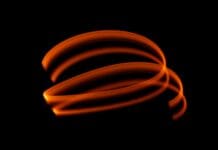This post is also available in:
 עברית (Hebrew)
עברית (Hebrew)
Researchers managed to build a new kind of bifacial (two-faced) solar panel using single-walled carbon nanotubes as both front and back electrodes, measuring just 2.2 nanometers across (slightly thinner than a strand of human DNA).
This study, published in Nature Communications, was written by scientists from Surrey, the University of Cambridge, the Chinese Academy of Sciences, Xidian University, and Zhengzhou University.
Dr. Jing Zhang, a research fellow at Surrey’s Advanced Technology Institute, explained that their bifacial cells can harvest sunlight from both front and back panels, generating more energy and depending less on which angle the light hits them. “The carbon nanotubes we use are very transparent and conduct electricity well. They have the potential to bring clean power within reach for millions of people—and we look forward to seeing how our invention will be used.”
According to Techxplore, these bifacial solar panels can generate more than 36 mW per square centimeter — and the back panel can produce almost 97% of the power that the front panel does. Most bifacial panels currently being offered on the market can generate only between 75% and 95% of that amount.
Director of the Advanced Technology Institute Professor Ravi Silva CBE explained that as he sees it, the world cannot decarbonize without solar power, but that goal requires much cheaper solar energy than is currently available – and panels that can absorb the energy of the sun using both sides are a great way to make the technology more cost-effective.
“We have produced arguably the highest efficiency single junction solar cell to date. Our panels cost 70% less to make than a normal one-sided solar panel. This could significantly modify the market and simplify the architectures required based on perovskite solar cells,” he concludes.


























